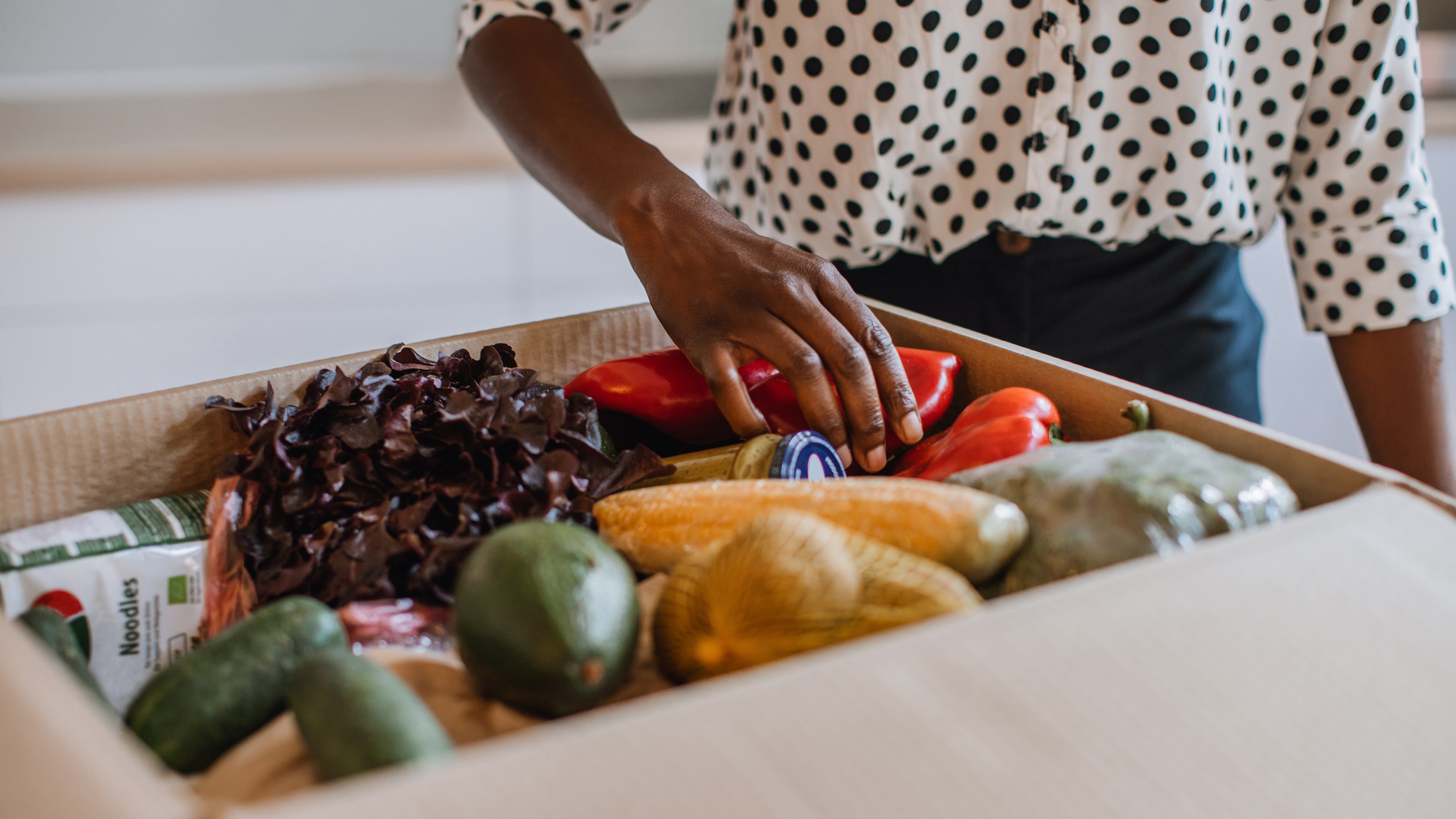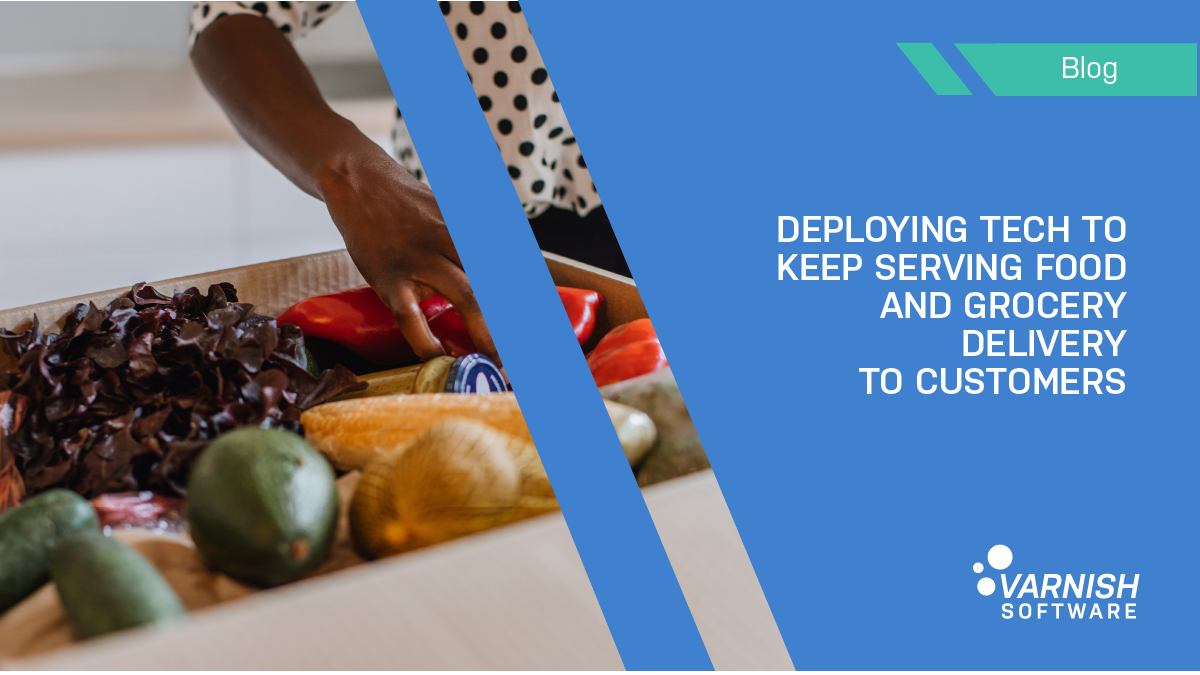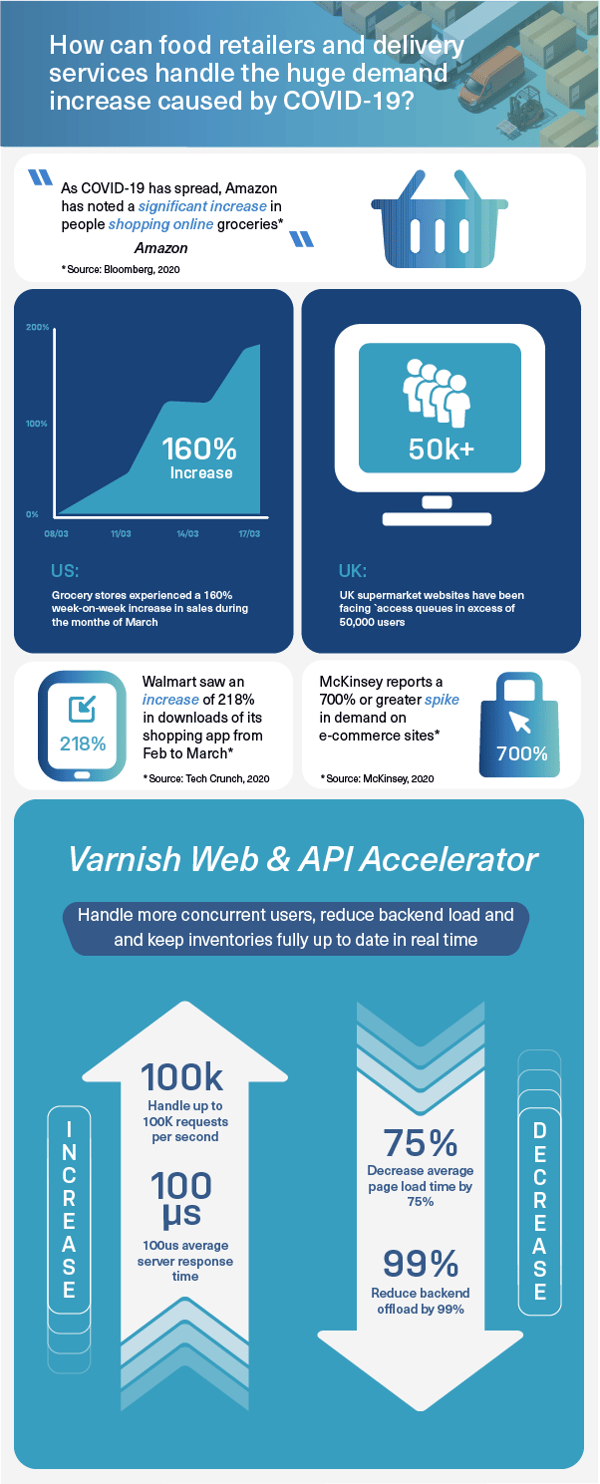Grocery and food delivery was already a fast-growing sector, with a predicted CAGR of almost 25% by 2022, but it has boomed during the unpredictable Covid-19 crisis, as shoppers are stuck at home but still need to eat. During the week of March 2, 2020, even before stricter social isolation guidelines came into force in the US, Instacart, Walmart and Amazon saw at least a 65% sales increase from last year. The same trends were evident for food delivery apps, such as DoorDash, Uber Eats and Postmates.

Instacart has seen sales rates grow by a factor of 20% in hardest-hit parts of the US; San Francisco delivery startup, Farmstead, said daily deliveries have increased by 50% each day and growing; San Diego-based delivery platform, Mercato, reports that order volume is up by 1,000% since the beginning of this crisis. Similarly, as the pandemic spreads across the US, grocery delivery apps are being downloaded in record numbers.
Before the current crisis, the market for food delivery stood at about 83 billion USD, or 1% of the total food market and 4% of restaurant food sales. At the time of McKinsey’s study, a growth rate of 3.5% was predicted, which has undoubtedly increased.
Transform to secure business continuity
The hospitality industry as a whole is experiencing a kind of “collateral damage” moment, closing down -- or changing to survive. The grocery and restaurant-delivery industry is seen as essential during these challenging times, and is struggling to keep up with demand. Some are responding by shifting their business strategies, e.g. Uber Eats making global deals with retail partners, such as Carrefour in France, Galp in Spain, and retailers in Brazil for delivery of groceries, toiletries, OTC pharmacy items and more. Other businesses are looking to increase capacity - both in terms of workers and the technology to handle the increased demand.
Serve customers no matter the demand
Technology is the backbone of this shift in business. While physical stores have to stay open and maintain infrastructure and staff, the digital equivalent poses enormous -- and ballooning -- challenges as well. McKinsey reports a 700% or greater spike in demand on e-commerce sites, straining IT systems to their limits. Online shoppers have experienced unprecedented wait times, having to queue just to get access to online shopping sites, only to find that they can’t secure a delivery date, and even if they can, most of the items they want are listed as unavailable.
Tech solutions for e-commerce need to be robust all the time, and in these times of unusual demand, sites and apps need:
- To scale up for whatever hits them, handling spikes in demand, reliably
- To keep inventory and content updated in real time across your web services
- To offer faster page load times, regardless of simultaneous requests
Are you ready to defy the overload and meet the necessity for a sustainable, accessible service? Give your customers a closer-to-normal online delivery service experience they can rely on now - and when things get back to normal.
Get in touch today to learn how Varnish can quickly help you launch and sustain long-term business transformation to deliver on what your customers need.
/VS-logo-2020-197x60.png?width=136&height=60&name=VS-logo-2020-197x60.png)





